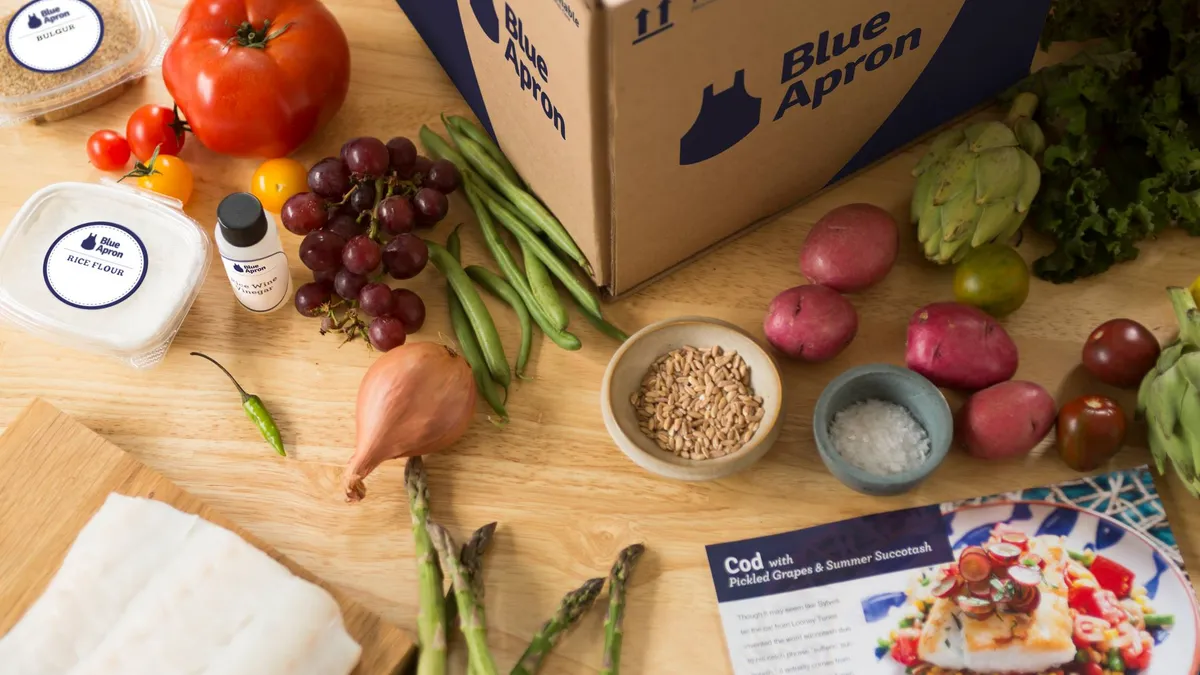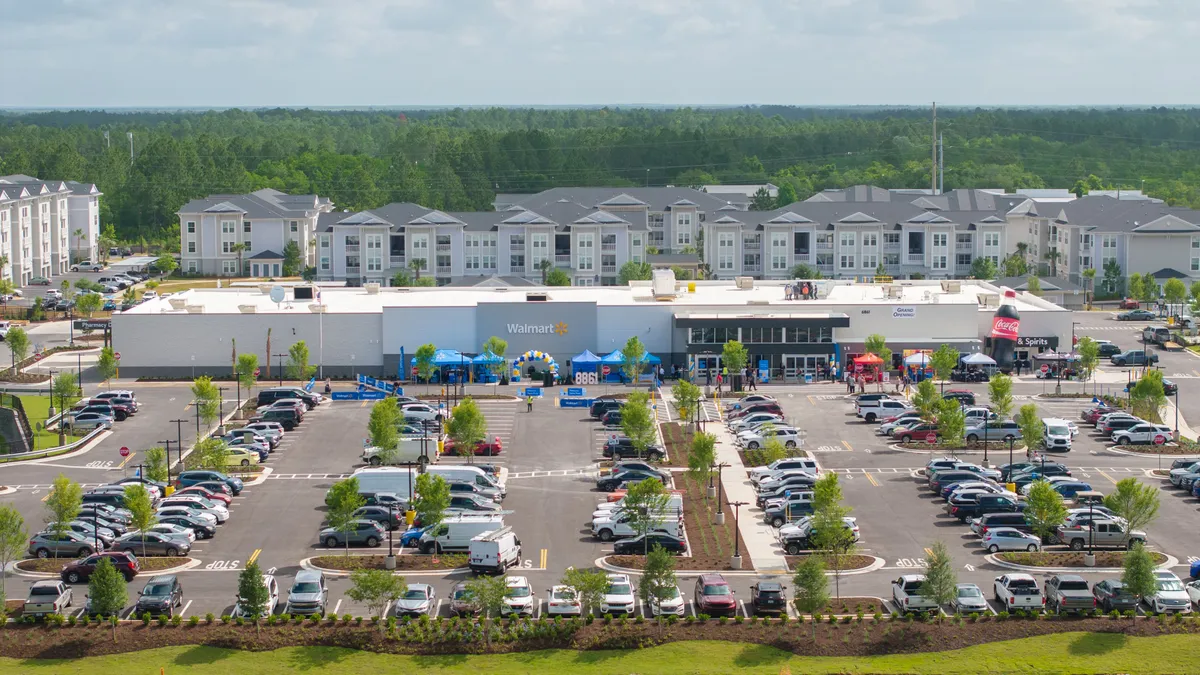Dive Brief:
- Blue Apron posted a net sales loss of $39.1 million, or 20 cents per share, which beat analysts' expectations of a 27 cent per share. According to a company release, net revenue fell 13% from the same period a year ago to $187.7 million, beating the FactSet consensus of $185 million.
- The company slashed its marketing spend as it focused on improving its operations, including bringing its Linden, New Jersey fulfillment facility online. As a result, Blue Apron counted 746,000 customers by the end of the quarter — down 13% over Q3 2017 and 15% from the same period a year ago.
- "We are methodically implementing operational improvements to drive our business and are encouraged by the progress we've made since last quarter, particularly in margin which contributed to improvement in our bottom-line performance," Brad Dickerson, CEO of Blue Apron Holdings said in a statement.
Dive Insight:
Blue Apron performed significantly better than analysts expected. Its losses were less than anticipated, and the company seems to be gaining more operational efficiency after several disastrous months as a publicly traded company.
After botching the opening of its Linden, New Jersey fulfillment center last year, the meal kit maker says it has installed additional technology, included automated systems, and has brought the facility in line with consumer demand. In another good sign for the company, its customers are spending $2 more on average compared to the same quarter last year, indicating Blue Apron is building loyalty with its core users.
Shares jumped on the expectation that Blue Apron, which is still the U.S. market leader, has finally turned a corner. But any gains will be hard-won for the company. It now has more than 100,000 fewer customers than it did three months ago, and building up those ranks won't come easily. According to Emory University marketing professor Daniel McCarthy, who closely studies the meal kit market, Blue Apron's historical customer acquisition cost is $84.60. The company typically spends around a quarter of its overall sales on marketing; when it slashed that number during this most recent quarter, it hemorrhaged users.
There's a legitimate concern that online meal kit companies like Blue Apron may never get off this "acquisition treadmill," as McCarthy calls it, and become profitable. The New York based company is also contending with fierce competition, including a surging HelloFresh, which recently went public on the German stock market and plans to overtake Blue Apron as the market leader by this year's second quarter. In an interview with Food Dive, HelloFresh's North American president, Tobias Hartmann, said his company is focused on operational efficiency and delivering on consumer demand for faster, more convenient meals.
Sun Basket, another leading meal kit company, has also seen strong results as Blue Apron has faltered, growing revenue by 280% in 2017 on the back of its health-focused kits. The company recently raised $57.8 million in funding, headlined by a $42.8 million Series D investment from August Capital.
Grocery retailers, too, have expanded their meal kit offerings. Kroger now offers its Prep + Pared meal kits in a few hundred stores, while Albertsons has begun adding Plated kits to its stores on the West Coast. Online meal kit companies have shrugged off retail competition, but the convenience of being able to grab a kit in-store without committing to a subscription is undeniably appealing for shoppers.
Despite the jump in Blue Apron shares, its stock price is down 17% on the year and more than 65% since the company went public in June.










